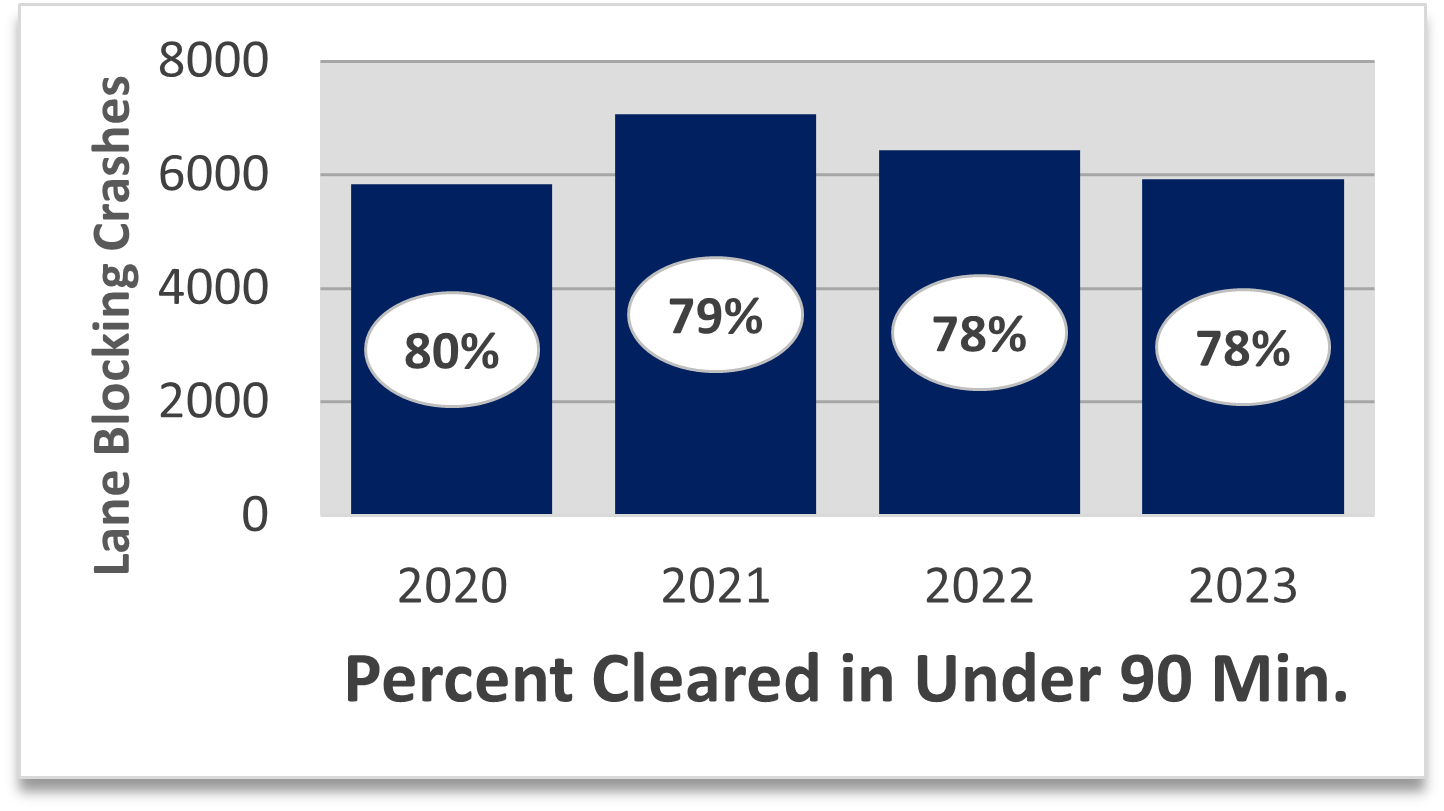The Goal: Keep ODOT roads open through maintenance, monitoring, repair and preservation of system assets.
We work to keep interstates and highways open and accessible so people and freight can get where they need to go. Accordingly, we perform services such as snow and ice removal, clearing debris that can otherwise cause flooding, removing rockfall and landslide debris, and clearing lanes after traffic incidents. Part of ensuring roadways remain open also includes keeping roads, bridges, and other assets in good repair. When bridges are not maintained, for example, they cannot carry heavy trucks – forcing freight to take long detours. Preservation and maintenance functions are thus key to supporting customers – the traveling public – get where they need to go safely and efficiently.
Services by maintenance staff help keep roads open
- ODOT has about 1,300 full-time employees across Oregon who perform essential services needed to maintain, monitor, and repair the transportation system. They work 7 days per week, 365 days per year in all conditions to keep roads open and travelers safe.
2021-2023 Biennium Data
Lanes are opened quickly after a crash or other incident

Source: ODOT Transportation Systems Operations 2023 Annual Report
Litter and graffiti issues are increasing at rates greater than we can keep up with
Litter and graffiti happen in all parts of the state and ODOT, working with local governments, addresses those issues to the best of our ability.
- In 2023, Senate bill 5701 gave ODOT $20 million in general fund dollars for litter removal, graffiti cleanup, camp cleanup and access prevention in the Portland metro area for use through June 2025.
- In addition, we are partnering with local business leaders to pilot a Sponsor-a-Highway program that is currently removing graffiti and litter on the i-405 corridor in Portland.

ODOT spent $22 million to clean and restore
highway property during the 2021-23 budget cycle
To learn more about litter and graffiti clean-up efforts, please visit:
Litter and Graffiti Clean-up
Weather extremes caused by climate change have resulted in more frequent and severe emergency events

- On average, we spend an additional $18 million every 5 years on wildfires, flooding, and other extreme weather events. These large expenses come with transportation impacts like closures and delays. For example:
- Between 2020 and 2023, 56 wildfire events and 212 rockfalls caused over 4,300 hours of travel delays.
- With existing resources we will be challenged to keep up with more frequent and severe weather events, which will contribute to an increase in travel delays.
2024 Durkee Fire along I-84
- Since 2020, we’ve had 46 emergency events. Each event cost an estimated $8.2 million.
- Few of our emergency events qualify for federal reimbursement, meaning the cost burden is placed on the state.
2021-2023 Biennium Data
The condition of ODOT roads and systems are declining
At current funding levels, state highway pavement, bridges, culverts, road signs and traffic signals are deteriorating at a faster rate than we can repair and replace them.